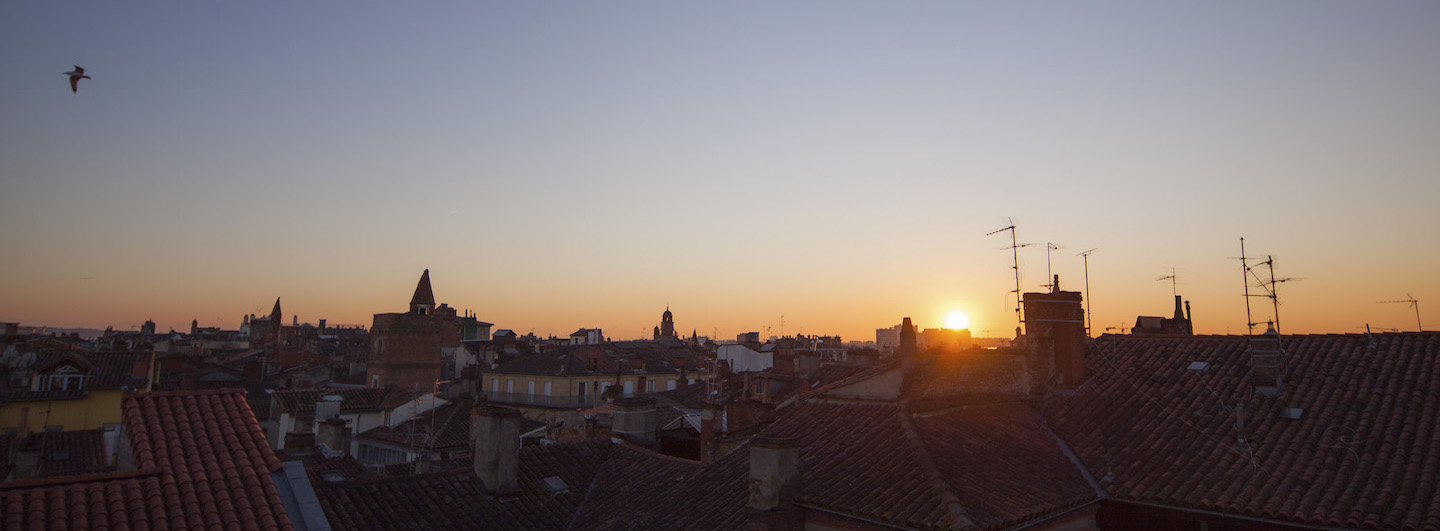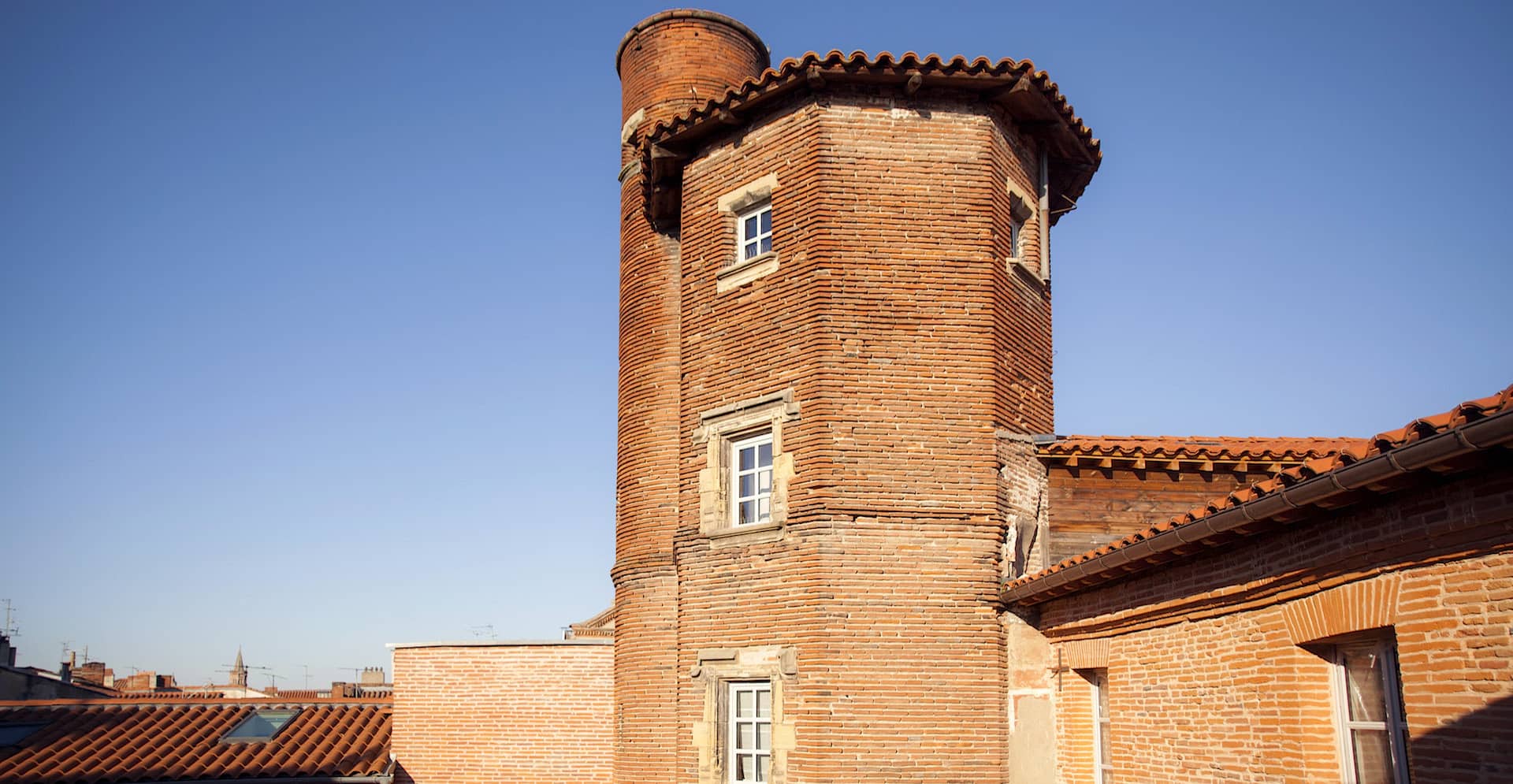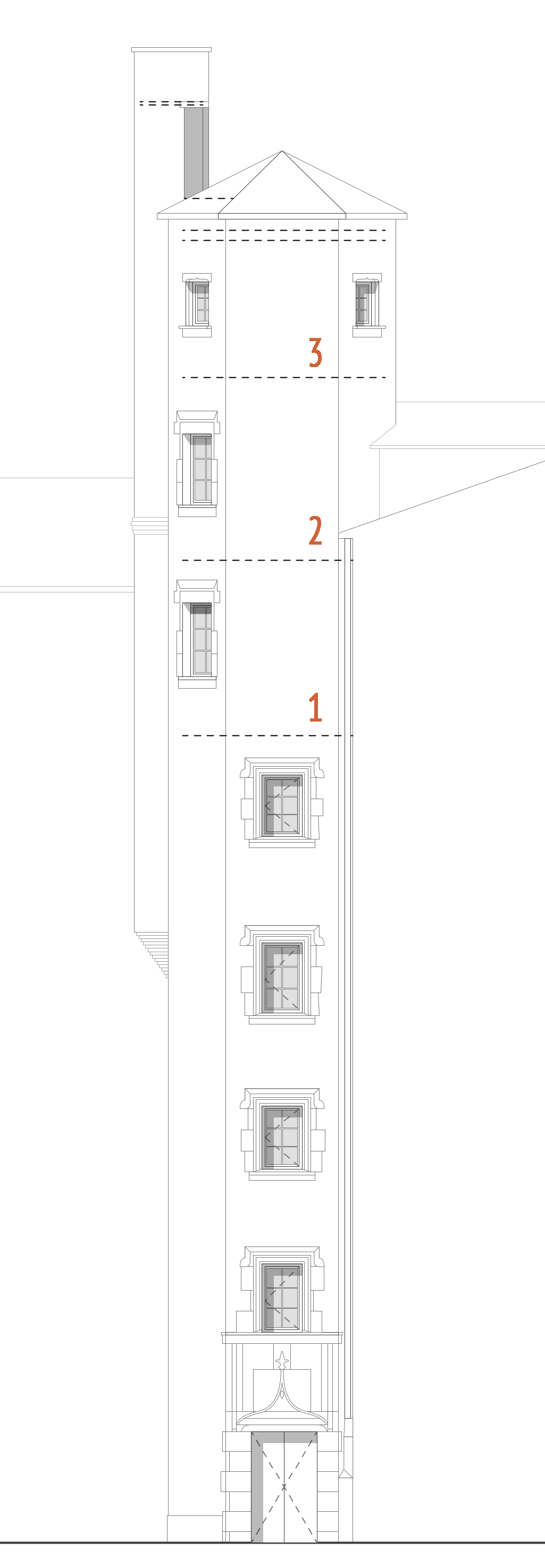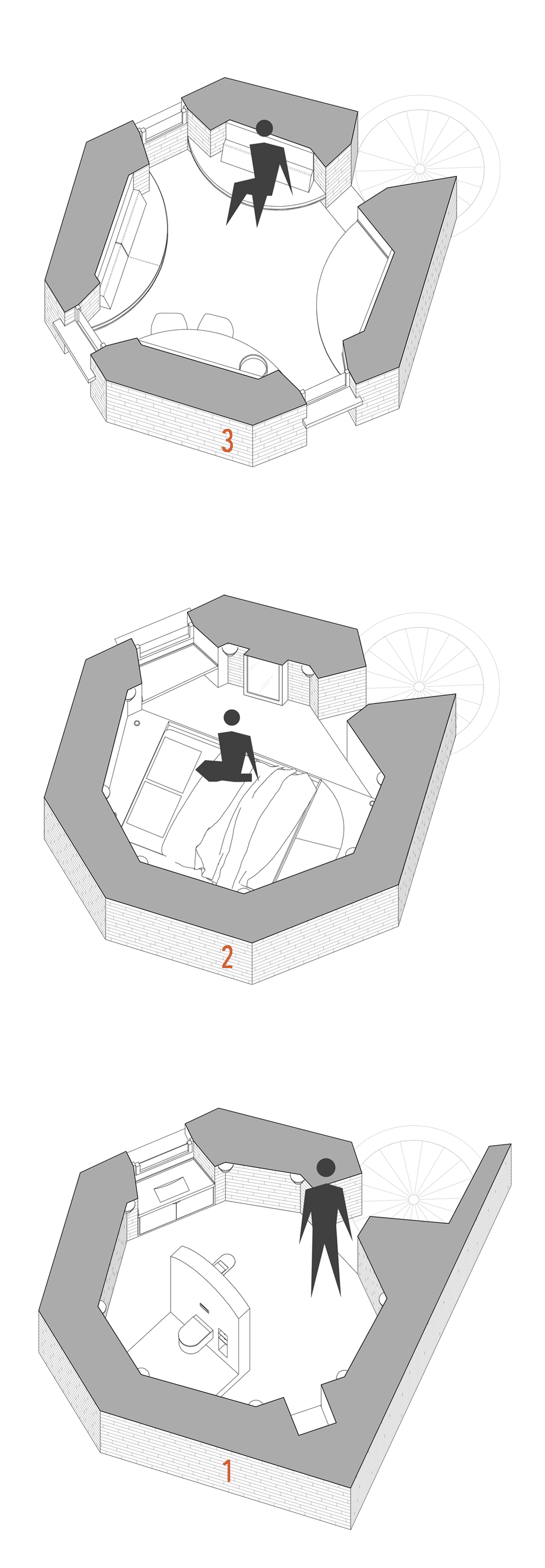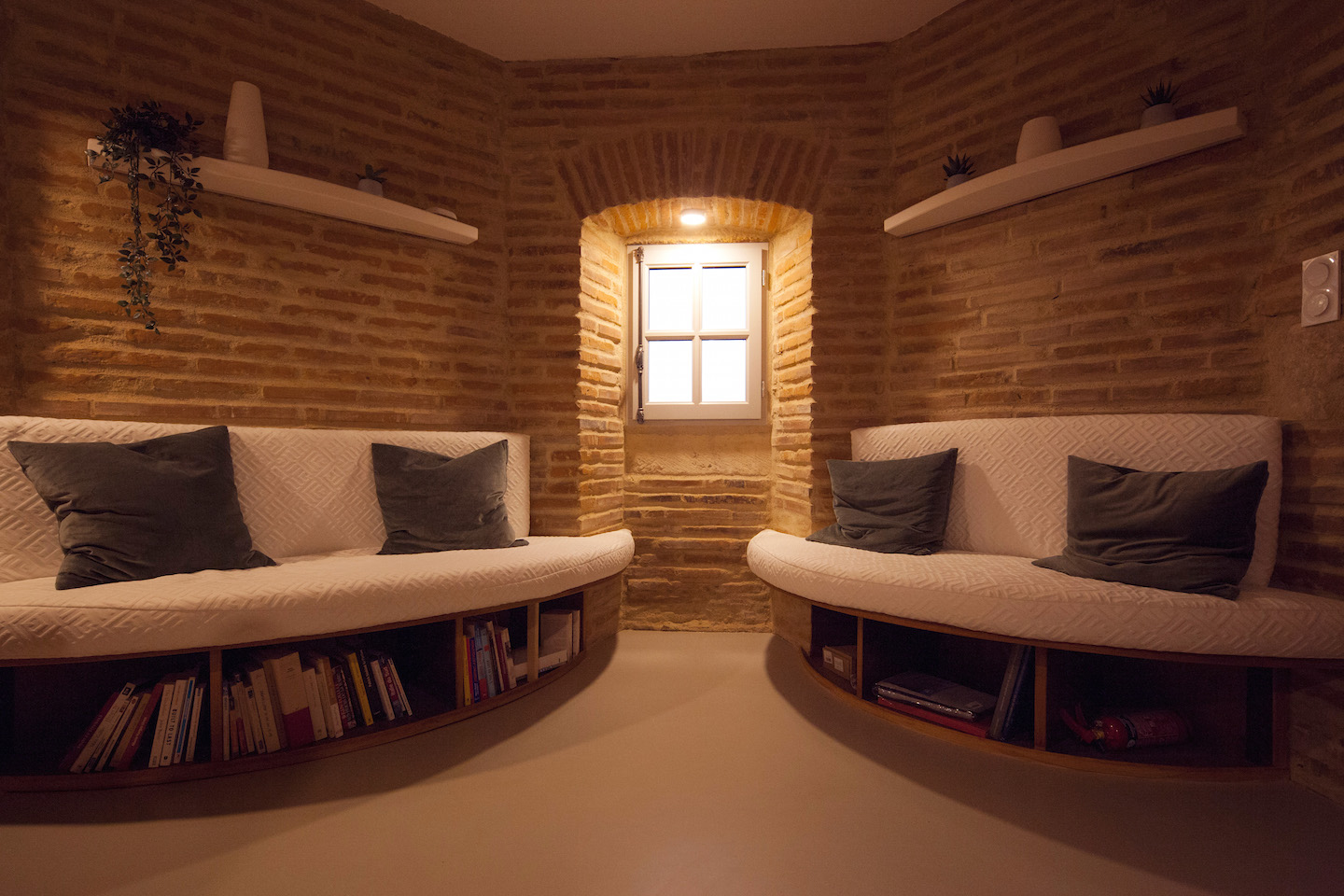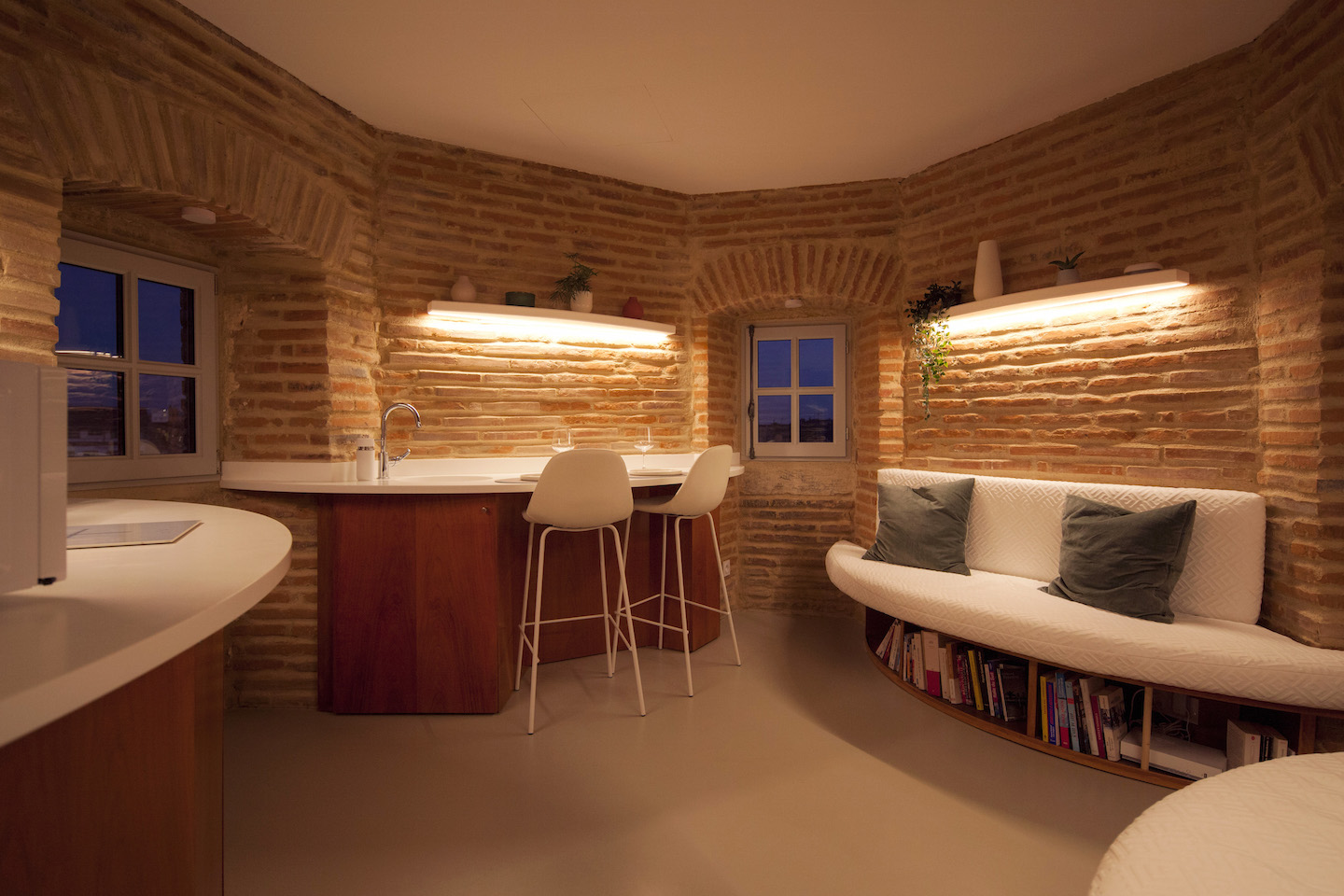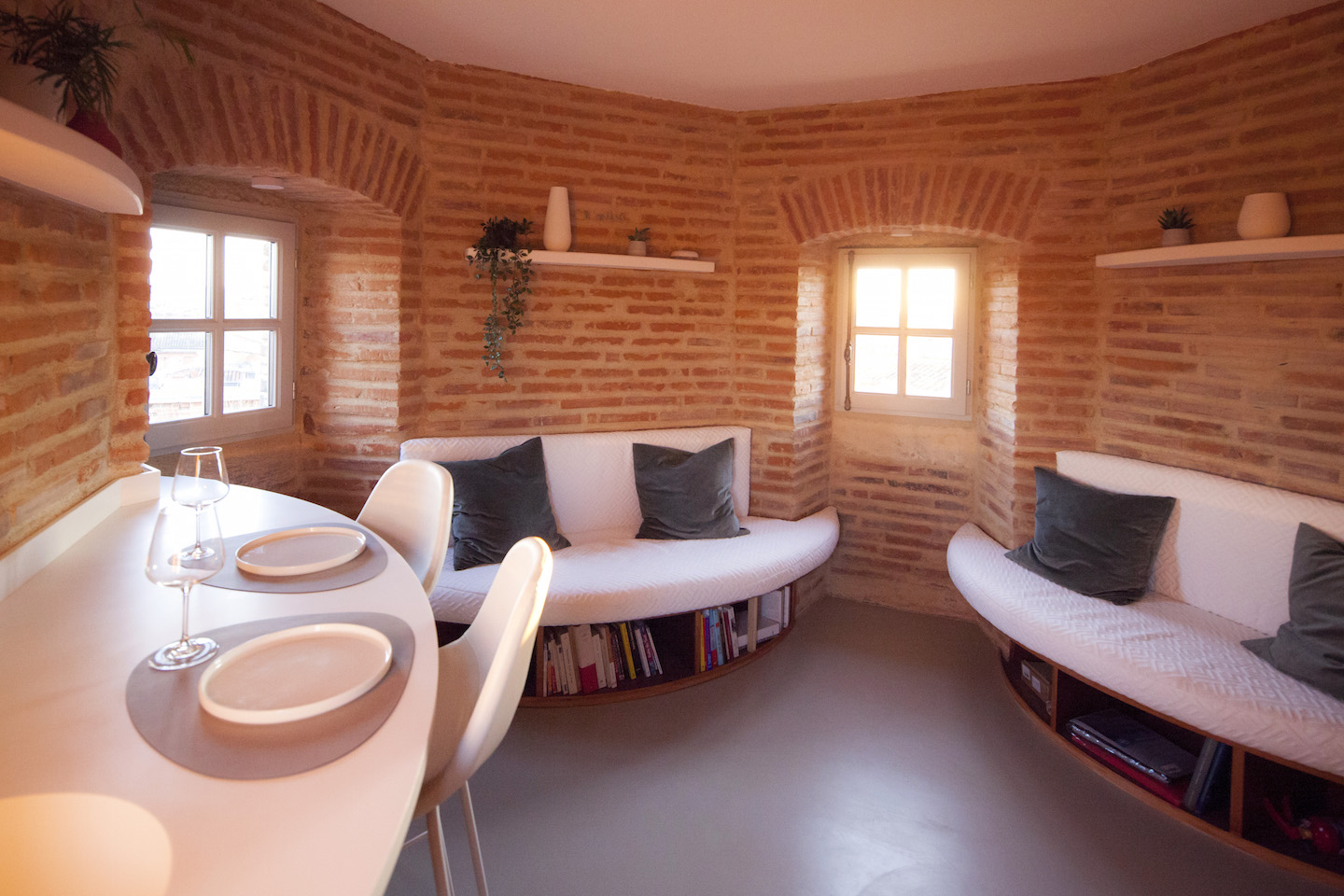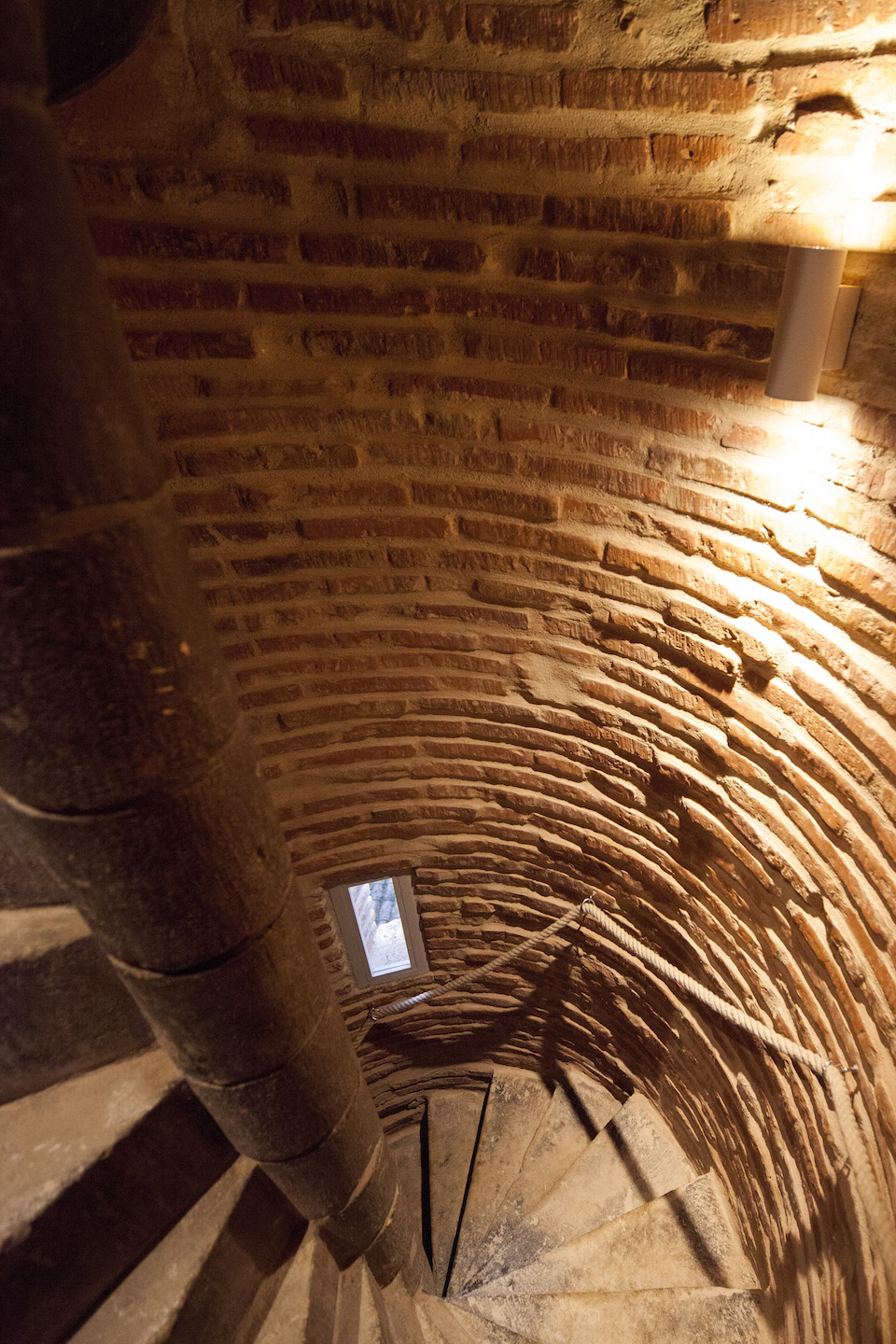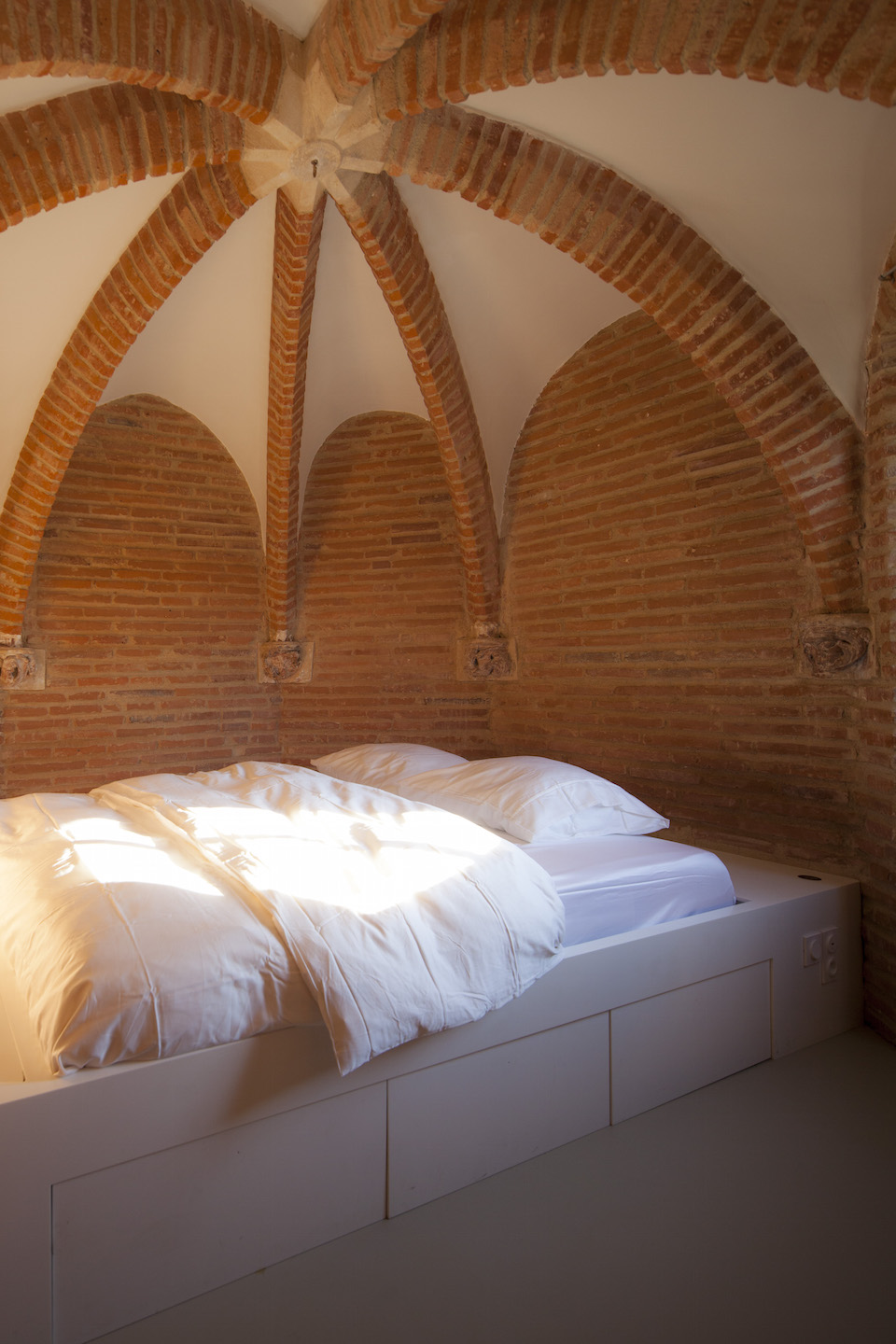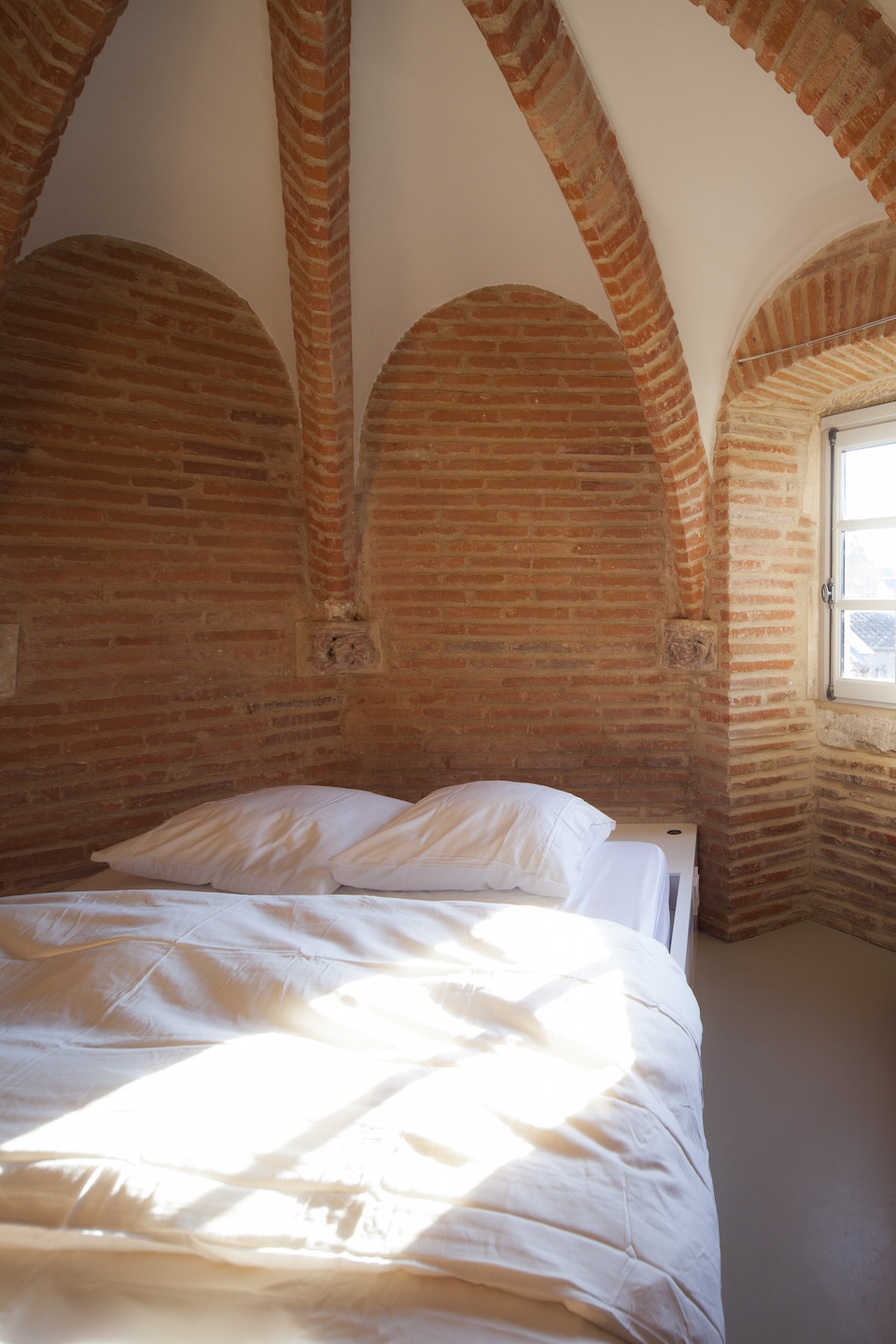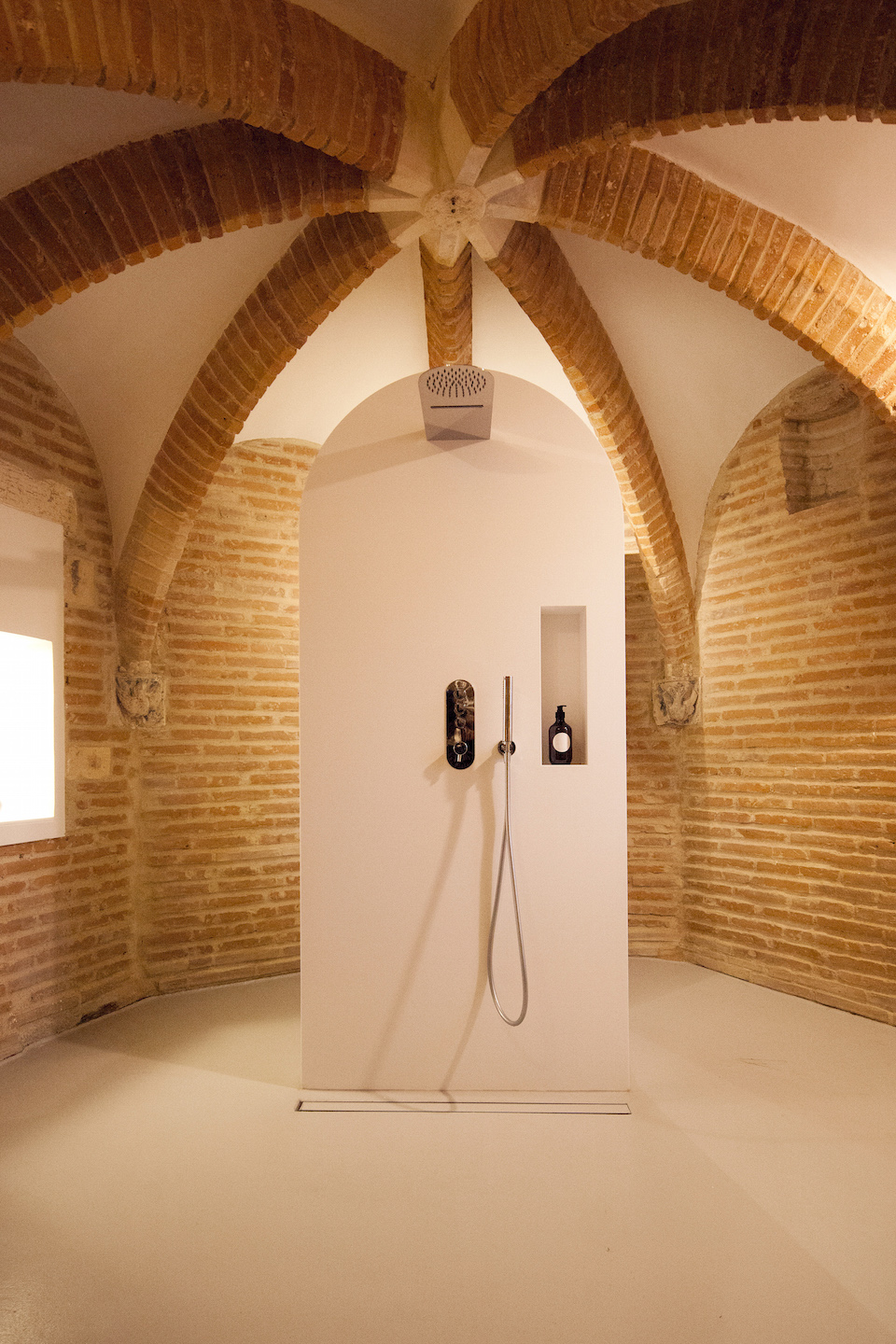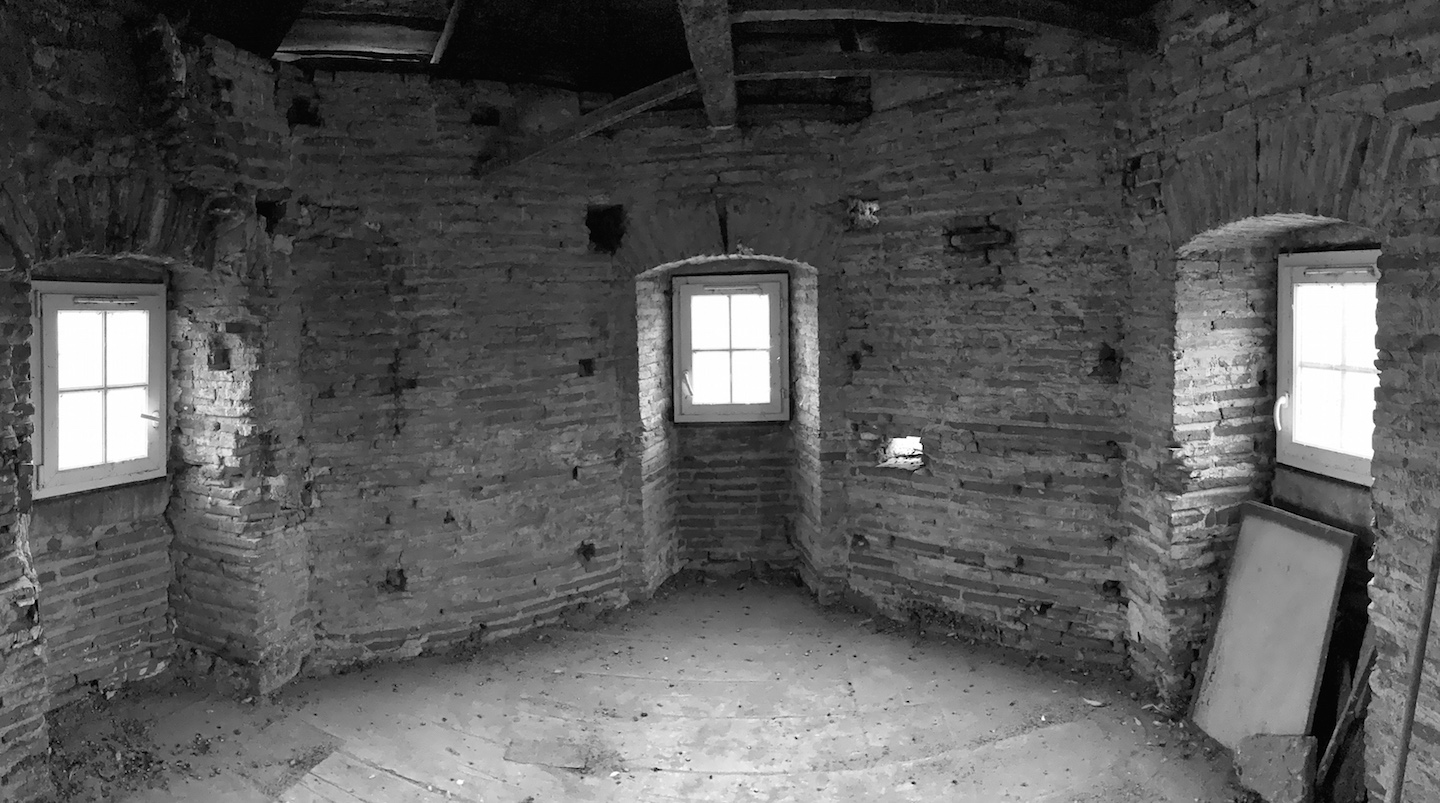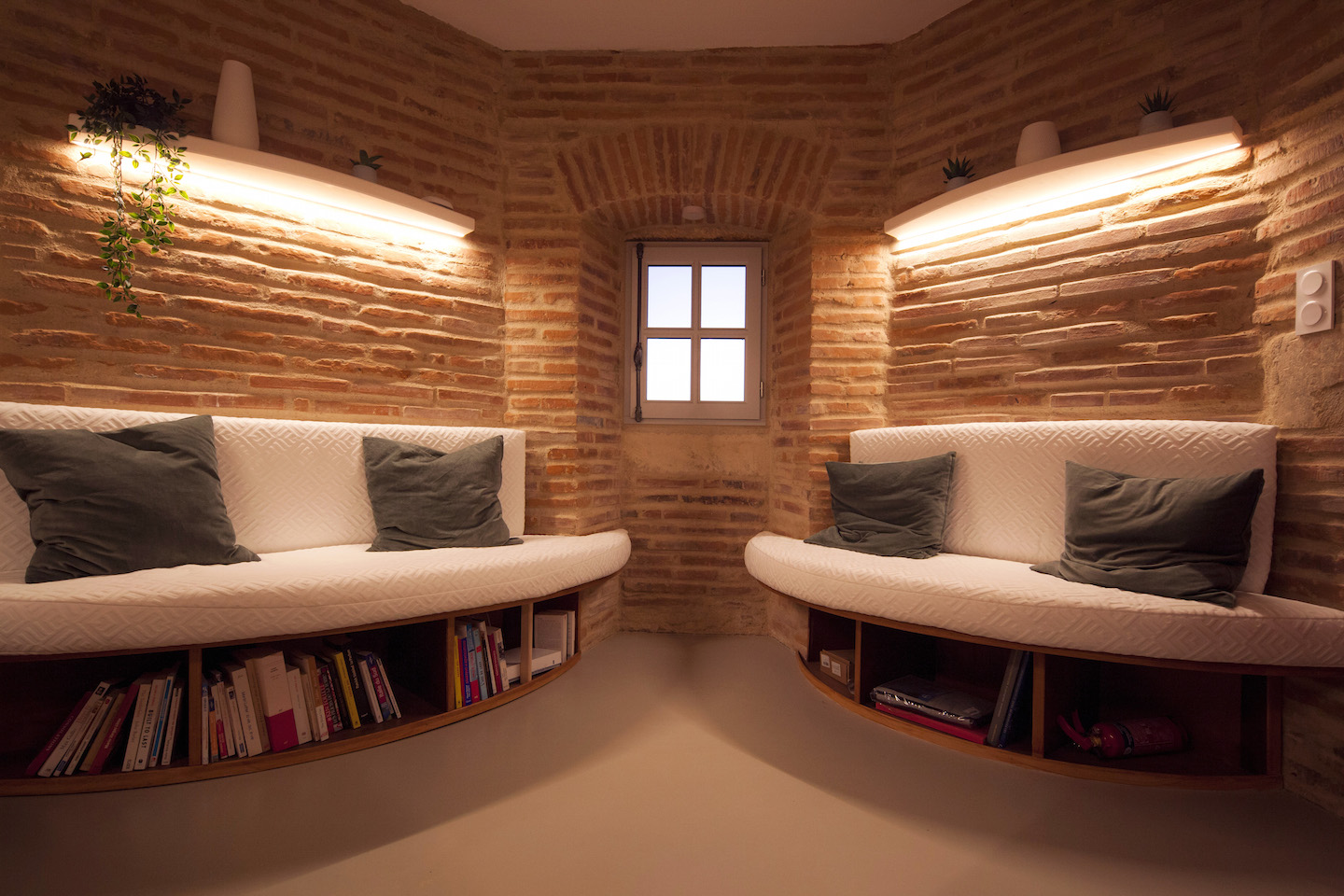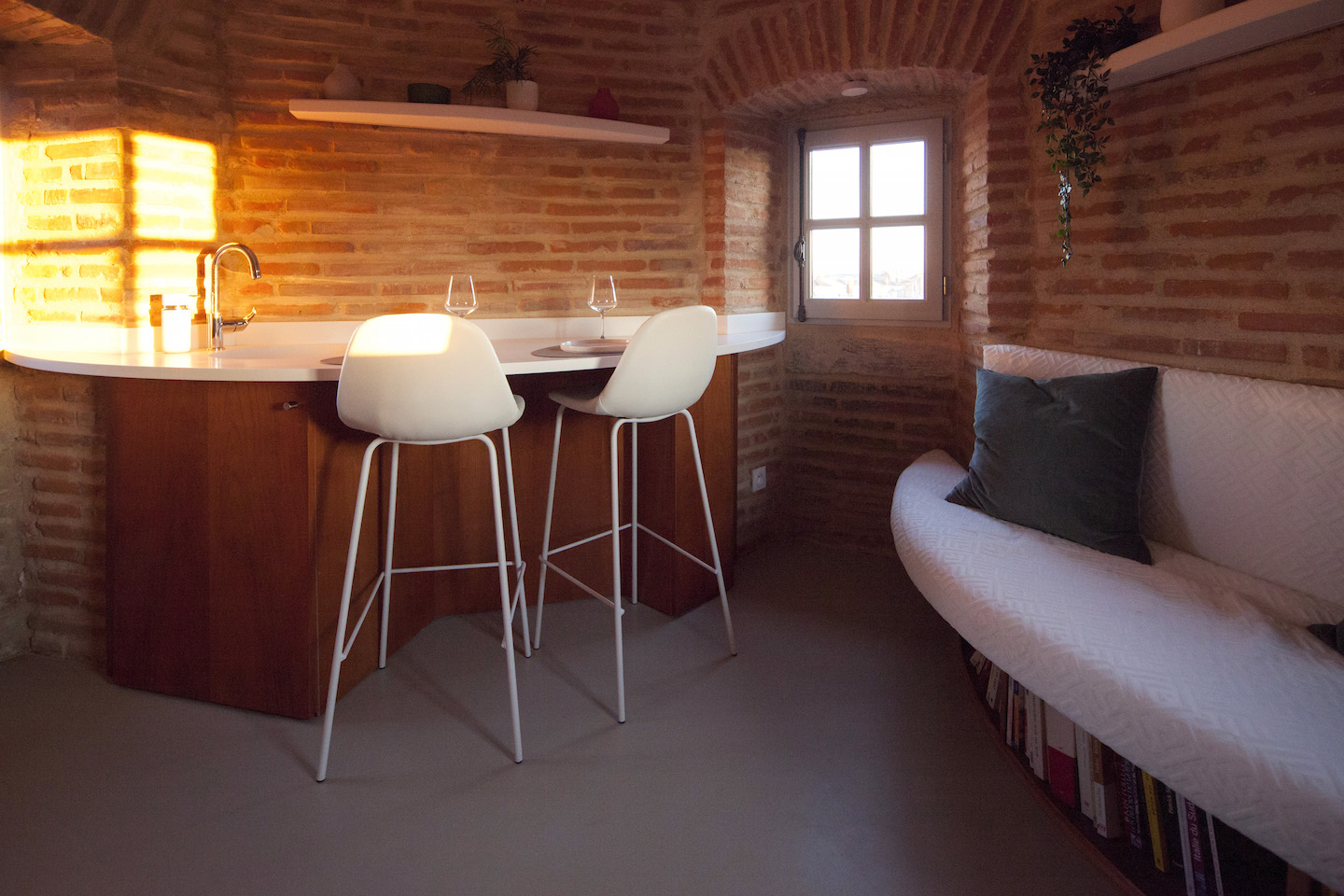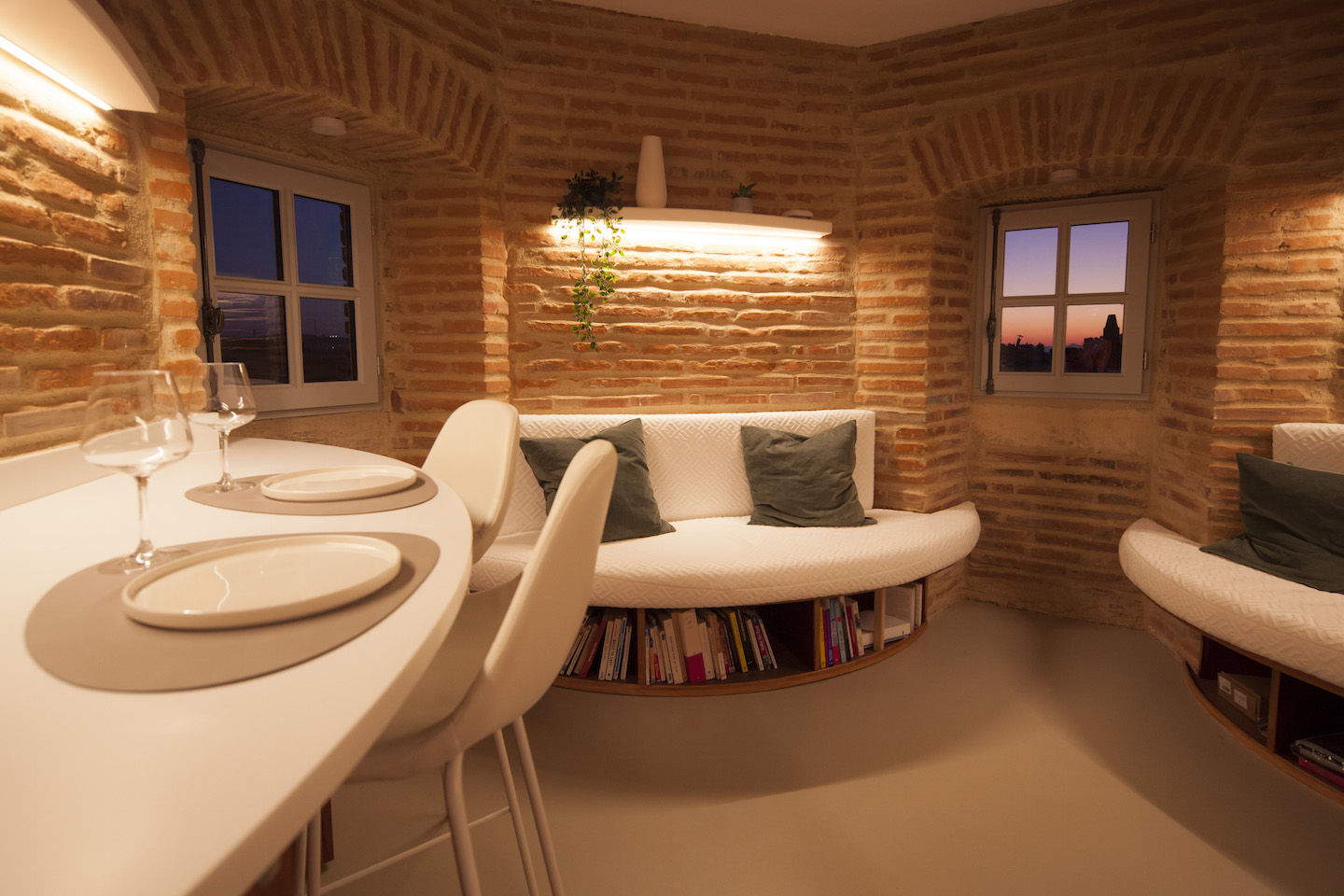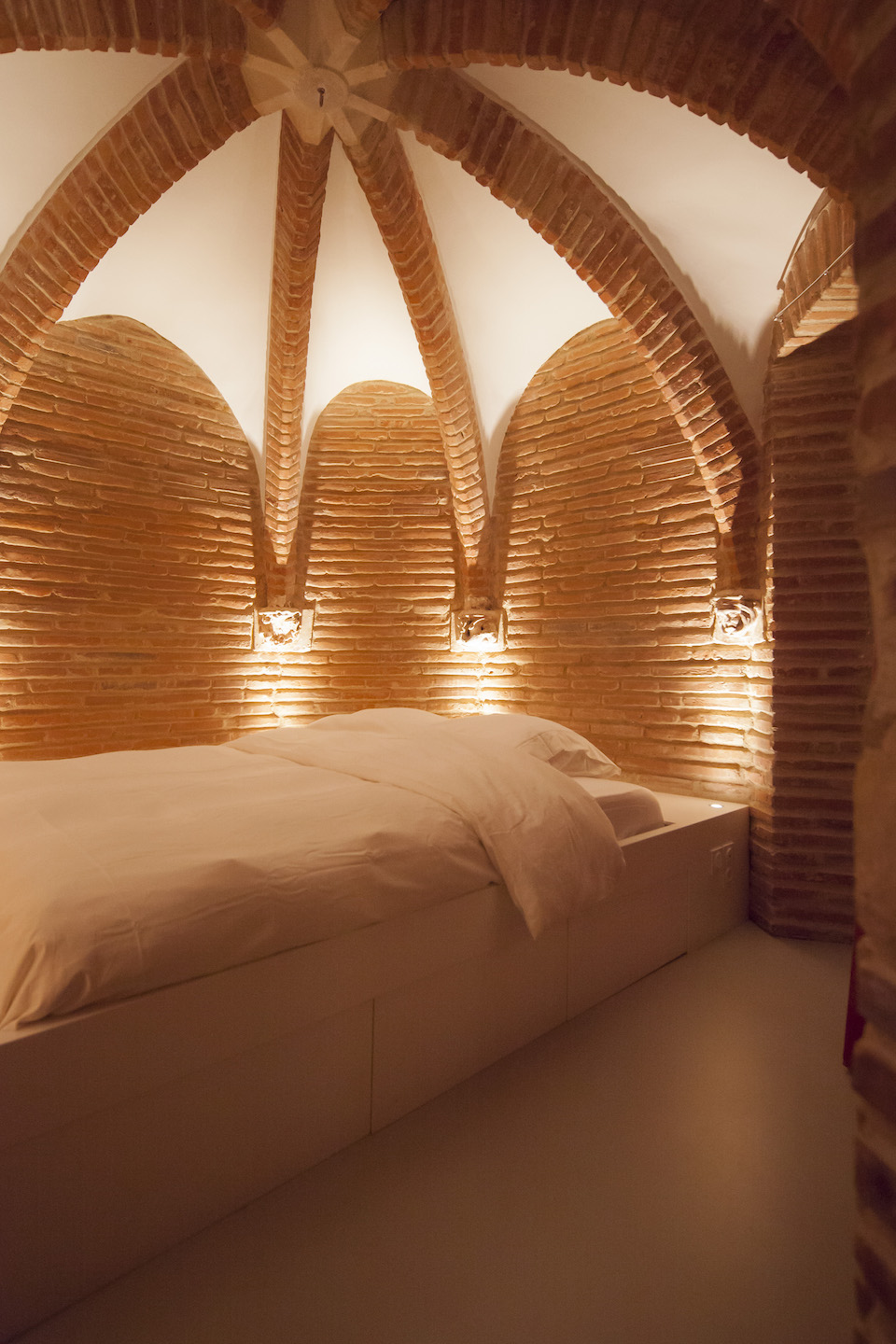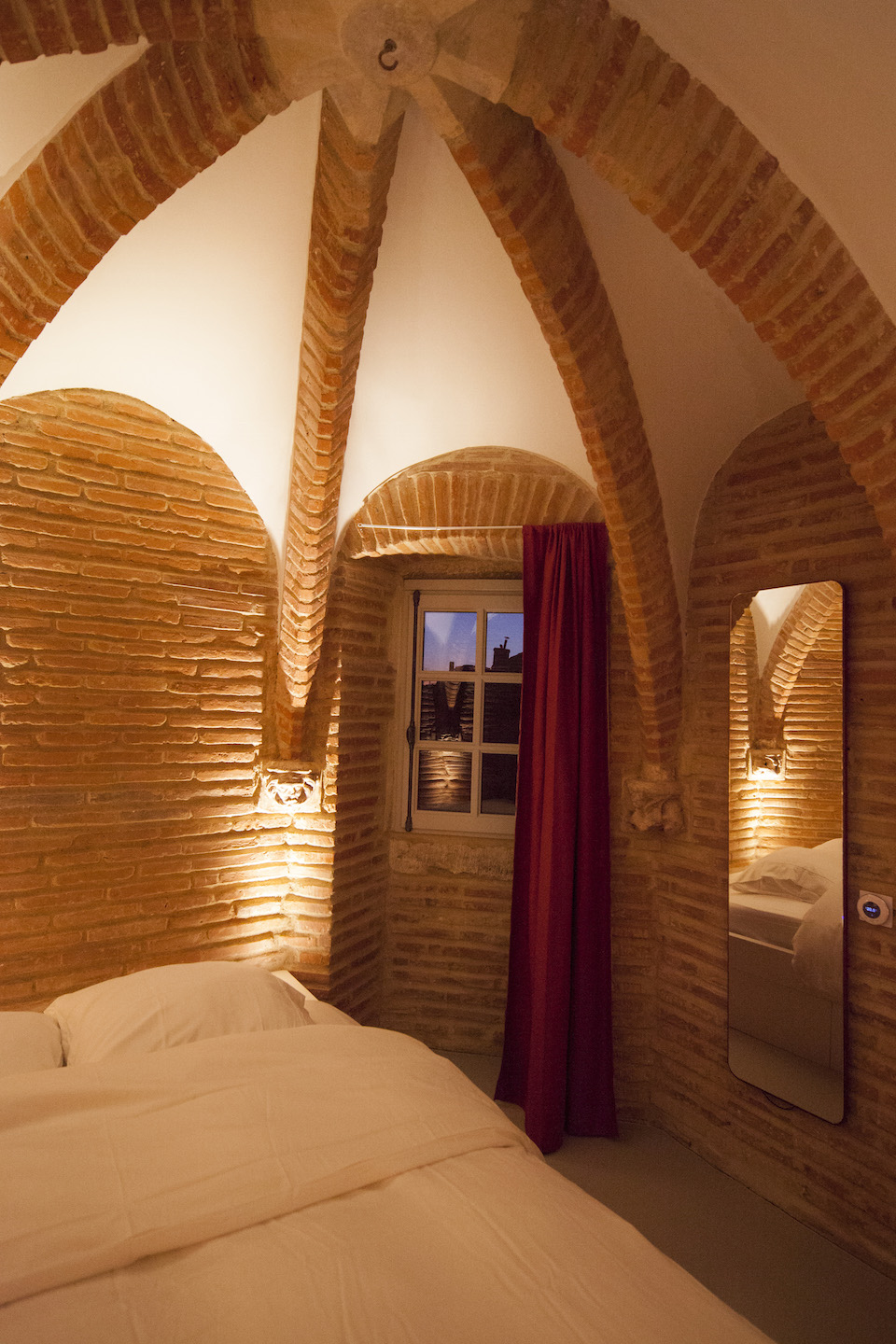The breathing windows
11 February 2022
Pierre Seguy's tower
Interior design of a gothic tower in Toulouse, Franc | 2019-2021 | client : private | Photos Cloé Chapelier
The project consists in renovating and transforming the last levels of Pierre Séguy’s gothic tower into triplex housing. This unusual accommodation is located at the heart of Toulouse’s historic centre, a stone’s throw from the Capitole plaza. It is the product of the encounter of a young architect and an even younger and bold client who share the same goal of promoting an exceptional heritage through a contemporary and sober approach.
From the 13th to the 16th century, public figures and wealthy merchants built many private mansions in old Toulouse. They asserted their power by extending the stair towers higher than necessary in a true symbolic competition of social achievement. The sky of Toulouse is thus dotted with a hundred brick towers, like a collection of lookouts over the city gazing at each other.
Pierre Seguy's tower is part of this local history and has survived admirably through the ages. It was built in 1477 and is the only Gothic remains of Jean Bolé's Hôtel Particulier in which it stands, the other buildings having been largely redesigned since then. Located at the corner of the inner courtyard, the tower houses a large spiral staircase serving the floors of the mansion through its first levels. Directly above, three small storeys of 9 m2 each stick out from the roof. They are accessible by a narrow secondary staircase. The first two floors display an introverted character, opening onto the courtyard through a single window. However, they have remarkable vaulted ceilings. The upper level is covered by a more recent and less noteworthy framework, but it benefits from unobstructed views through three small, regularly placed openings.
The project enhances these different features. It accentuates and stages the assets of the existing building to offer visitors a memorable and unusual time. The introversion of the first levels is underlined by a centripetal arrangement which clears the walls, so as to not disturb the reading of the vaulted ceiling. The last level on the contrary is laid out with a centrifugal logic in mind. It steers towards the openings and the distant views.
On the first level, the bathroom is organized around a central piece of furniture which includes all sanitation facilities. This way, they’re hidden from the entrance, and it allows to safeguard the historic walls.
The arched front of the structure follows the design of the outer walls and accommodates a shower head centered on the crossing of the arches, therefore strengthening the effect of convergence. Under the window, the washstand fits into the thickness of the wall to prevent it from jutting out onto the octagonal plan.
On the second level in the bedroom, the bed, the storage units and the networks are grouped together in a discrete platform-like piece of furniture, allowing the ceiling vaults to be fully revealed. The sculpted bases supporting the ribs are highlighted by a low angle lighting.
On the top level, a furnishing system on the periphery connects the narrow windows to each other like an incentive to approach and to project oneself into the view. The curved shapes of the furniture make for a more fluid movement, and the similarity of their design despite their different functions reinforces the homogeneous reading of this space thus opening uniformly on the different orientations. It becomes a real lighthouse in the sky of Toulouse.
In general, the intervention is thought as contemporary, sober and readable. It serves the enhancement of this extraordinary heritage, by establishing formal parallels with pre-existing elements and by privileging smooth and clear materials to contrast with the hundred-year-old bricks. It is part of a wider renovation project including ongoing works on the outside facade of the tower and on other buildings part of the Hôtel Particulier.
